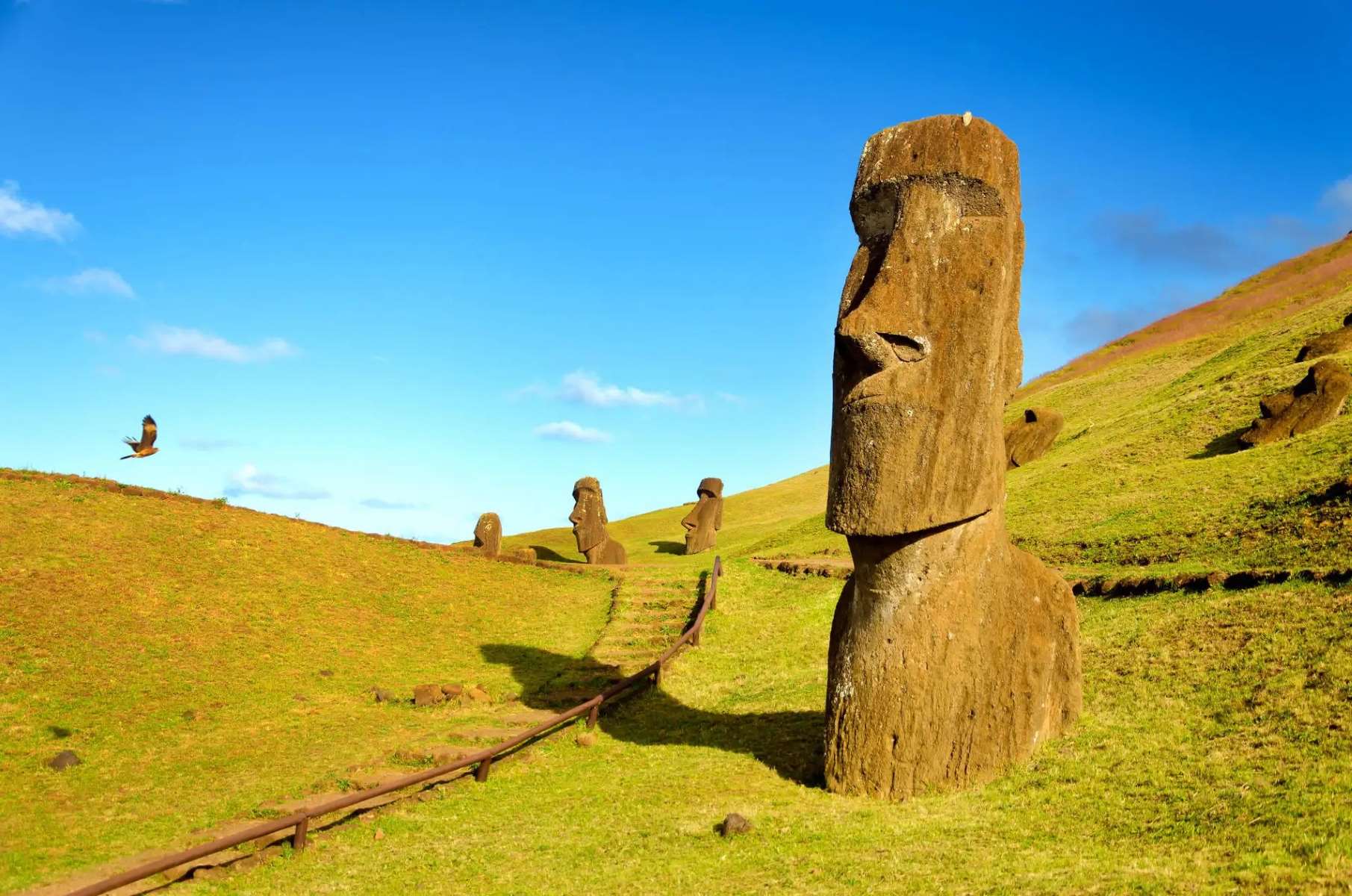
Ever wondered what life is like in the most remote corners of the world? Remote places often hold secrets and stories that are both intriguing and mysterious. From isolated islands to hidden villages, these locations can seem like they belong to another era. Imagine a place where the nearest neighbor is miles away, and the hustle and bustle of city life is a distant memory. Remote places offer a unique glimpse into different cultures, untouched landscapes, and ways of living that have remained unchanged for centuries. Ready to learn some fascinating facts about these far-flung destinations? Let's dive into the world of the remote and the remarkable!
Key Takeaways:
- Remote places like Tristan da Cunha and Easter Island hold unique cultures and histories, shaped by their isolation and breathtaking landscapes.
- The Amazon Rainforest and the Himalayas are remote, biodiverse regions with unique wildlife and indigenous tribes, offering a glimpse into untouched wilderness and ancient traditions.
Remote Places: Hidden Wonders of the World
Remote places often hold secrets and wonders that few get to experience. These locations, far from bustling cities, offer unique landscapes, cultures, and histories. Let's dive into some fascinating facts about these isolated spots.
The Mystique of Tristan da Cunha
Tristan da Cunha, the most remote inhabited archipelago, lies in the South Atlantic Ocean. Its isolation has shaped its unique way of life.
- Tristan da Cunha is 2,400 kilometers from the nearest inhabited land, Saint Helena.
- The island has a population of around 250 people, all descendants of the original settlers.
- There are no airports on Tristan da Cunha; the only way to reach it is by a seven-day boat trip from South Africa.
- The island's economy relies on fishing, agriculture, and selling postage stamps to collectors.
The Frozen Wilderness of Antarctica
Antarctica, the southernmost continent, is a land of extremes. Its harsh climate and remote location make it one of the least explored places on Earth.
- Antarctica is the coldest place on Earth, with temperatures dropping to -89.2°C (-128.6°F).
- It is also the driest continent, receiving less precipitation than the Sahara Desert.
- Despite its harsh conditions, Antarctica is home to unique wildlife, including emperor penguins and Weddell seals.
- The continent has no permanent residents, only scientists and researchers who live there temporarily.
The Isolated Beauty of Easter Island
Easter Island, known for its mysterious moai statues, is one of the most remote inhabited islands in the world. Located in the southeastern Pacific Ocean, it holds many secrets.
- Easter Island is 3,512 kilometers from the nearest continental point, Chile.
- The island's famous moai statues were carved by the Rapa Nui people between 1250 and 1500 CE.
- There are nearly 900 moai statues on the island, each weighing several tons.
- The island's population declined drastically due to deforestation and overpopulation, leading to societal collapse.
The Secluded Life on Pitcairn Island
Pitcairn Island, a British Overseas Territory, is one of the least populated places on Earth. Its small community lives a simple, self-sufficient life.
- Pitcairn Island has a population of around 50 people, all descendants of the Bounty mutineers and Tahitians.
- The island is located in the South Pacific Ocean, over 5,000 kilometers from the nearest continent.
- Pitcairn's economy relies on subsistence farming, fishing, and selling handicrafts to tourists.
- The island has no airstrip; the only way to reach it is by boat from New Zealand, which takes several days.
The Rugged Terrain of Svalbard
Svalbard, an archipelago in the Arctic Ocean, is known for its rugged terrain and extreme conditions. Despite its isolation, it has a small, thriving community.
- Svalbard is located halfway between mainland Norway and the North Pole.
- The archipelago has a population of around 2,500 people, mostly living in the town of Longyearbyen.
- Svalbard is home to more polar bears than humans, making it a unique wildlife haven.
- The Svalbard Global Seed Vault, a secure seed bank, is located here to preserve a wide variety of plant seeds.
The Remote Highlands of Bhutan
Bhutan, a small kingdom in the Himalayas, is known for its remote highlands and unique culture. Its isolation has helped preserve its traditions and natural beauty.
- Bhutan is the only country in the world that measures its success by Gross National Happiness instead of GDP.
- The country has a population of around 750,000 people, with many living in remote mountain villages.
- Bhutan's government restricts tourism to protect its culture and environment, allowing only a limited number of visitors each year.
- The kingdom is home to the world's highest unclimbed mountain, Gangkhar Puensum, standing at 7,570 meters (24,836 feet).
The Deserted Expanse of the Atacama Desert
The Atacama Desert in Chile is one of the driest places on Earth. Its remote location and extreme conditions make it a unique and fascinating place.
- Some parts of the Atacama Desert have never recorded rainfall.
- The desert's unique landscape includes salt flats, sand dunes, and volcanic peaks.
- The Atacama is home to some of the world's largest and oldest mummies, predating the Egyptian mummies by thousands of years.
- The desert's clear skies make it one of the best places in the world for astronomical observations.
The Isolated Peaks of the Himalayas
The Himalayas, the world's highest mountain range, are home to some of the most remote and challenging terrains. These peaks have fascinated explorers and mountaineers for centuries.
- Mount Everest, the highest peak in the world, stands at 8,848 meters (29,029 feet).
- The Himalayas span five countries: India, Nepal, Bhutan, China, and Pakistan.
- The region is home to unique wildlife, including the elusive snow leopard and the red panda.
- Many remote Himalayan villages are accessible only by foot or mule, preserving their traditional way of life.
The Untouched Wilderness of the Amazon Rainforest
The Amazon Rainforest, the largest tropical rainforest in the world, is a remote and biodiverse region. Its vast expanse holds many secrets and wonders.
- The Amazon Rainforest covers over 5.5 million square kilometers, spanning nine countries.
- It is home to around 400 billion individual trees, representing 16,000 species.
- The rainforest is one of the most biodiverse places on Earth, with millions of species of plants, animals, and insects.
- Many indigenous tribes live in the Amazon, some of which have had little or no contact with the outside world.
- The Amazon River, the second-longest river in the world, flows through the heart of the rainforest, providing a lifeline for its inhabitants.
Final Thoughts on Remote Places
Remote places hold a special allure. From the icy expanses of Antarctica to the lush forests of Papua New Guinea, these locations offer unique experiences and insights. They remind us of the planet's vastness and diversity. Exploring these areas can be challenging, but the rewards are immense. You get to see untouched landscapes, encounter rare wildlife, and learn about cultures that have remained isolated for centuries. These places also highlight the importance of conservation. Preserving their natural beauty and cultural heritage is crucial. So, whether you're an adventurer at heart or just curious about the world, remote places have something to offer. They inspire wonder and respect for the Earth. Next time you think about travel, consider venturing off the beaten path. You might discover something truly extraordinary.
Frequently Asked Questions
Was this page helpful?
Our commitment to delivering trustworthy and engaging content is at the heart of what we do. Each fact on our site is contributed by real users like you, bringing a wealth of diverse insights and information. To ensure the highest standards of accuracy and reliability, our dedicated editors meticulously review each submission. This process guarantees that the facts we share are not only fascinating but also credible. Trust in our commitment to quality and authenticity as you explore and learn with us.


